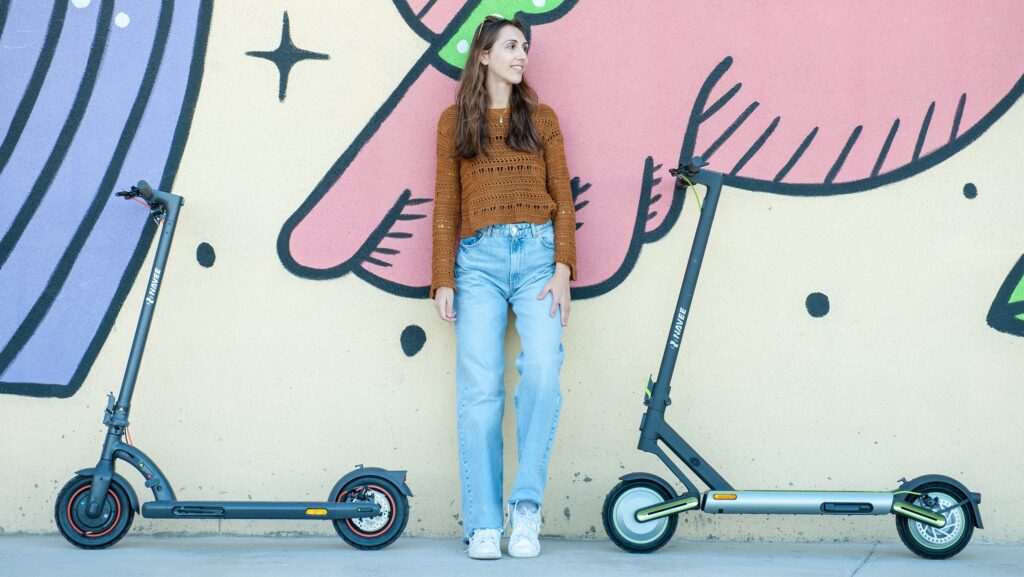A few months ago, I found myself dreading my daily commute. Between rising gas prices, unpredictable traffic, and the environmental impact of driving, I knew I needed a change. I started exploring more sustainable, cost-effective ways to get around the city—and that’s when I discovered the world of electric scooters. After comparing a variety of models and reading countless reviews, I ended up choosing the Navee electric scooter. Here’s my honest take on why this decision made such a difference in my daily life.
The Problem With Traditional Commuting
If you’re like me, you probably spend a lot of time behind the wheel or packed into public transportation. At first, I thought I could live with it, but over time the constant delays and expenses began to wear me down. Every morning was a gamble: either sit in bumper-to-bumper traffic or risk delays and overcrowding on the subway. Neither option felt right anymore.
Not to mention, I started feeling guilty about my carbon footprint. It was clear that relying on a gas-powered vehicle wasn’t just expensive—it was also contributing to environmental issues I cared deeply about.
Why I Started Looking Into Electric Scooters
I had seen a few people zipping around on electric scooters in my neighborhood, and the idea really intrigued me. They looked fun, nimble, and perfect for urban travel. But as with any big purchase, I wanted to make sure I was making a smart investment.
My list of requirements was pretty specific:
-
It had to be portable and lightweight
-
Range needed to be at least 20 miles per charge
-
The scooter had to be reliable, with solid reviews and a good safety record
-
I didn’t want to break the bank
After comparing various brands and talking to some scooter-enthusiast friends, I came across the Navee line. That’s when things really clicked.
What Makes the Navee Electric Scooter Different?
Right out of the gate, what impressed me most was how thoughtfully designed the Navee electric scooter is. It’s clear that this isn’t just a generic product with a fancy label—it’s a commuter’s tool built with real-world needs in mind.
1. Range That Matches Real-Life Needs
The model I chose boasts a range of about 25 miles on a full charge, which is more than enough for my round-trip commute. Unlike some scooters that advertise high range but deliver less in real-world conditions, the Navee held up well even on hilly terrain and in stop-and-go urban traffic.
2. Lightweight, Foldable, and Easy to Store
I live in a small apartment, so storage is always an issue. The compact folding mechanism on this scooter makes it easy to stash in a corner or carry up a flight of stairs. It’s not featherlight, but it’s definitely manageable—and much easier than lugging around a bike.
3. Build Quality and Safety
Let’s be honest: going 15-20 mph on small wheels can feel risky if the scooter isn’t well built. With Navee, the ride is incredibly stable, thanks to pneumatic tires and a shock-absorbing frame. The dual braking system (electronic and mechanical) adds an extra layer of safety, which gives me peace of mind when navigating through traffic.
Real-Life Performance: How It Fits Into My Routine
After a few weeks of daily use, the scooter seamlessly became part of my morning routine. I charge it overnight and wake up to a full battery. The ride is smooth, and I’ve shaved at least 20 minutes off my daily commute. Plus, no more waiting for late trains or hunting for a parking spot.
One of the surprising benefits? I’ve started to enjoy my mornings. Cruising through the city with the wind in my face actually puts me in a good mood before work. It’s a much better way to start the day than sitting in traffic, feeling frustrated and drained.
Cost Breakdown: Is It Really Worth It?
Electric scooters aren’t cheap upfront, but when I crunched the numbers, the Navee made a lot of financial sense.
Here’s what I’ve saved so far:
-
No more monthly metro card ($127/month)
-
Minimal electricity cost for charging (pennies per day)
-
Reduced wear and tear on my car
-
Fewer Uber/Lyft rides
In less than six months, the scooter has already paid for itself. And unlike a car, it doesn’t require regular oil changes, parking fees, or costly repairs. For budget-conscious commuters, that’s a big win.
Tips for First-Time Scooter Riders
If you’re thinking of making the switch, here are a few things I’ve learned along the way:
-
Wear a helmet: Even if you’re only going a few miles, safety should always come first.
-
Start slow: Take a few practice runs before jumping into heavy traffic.
-
Plan your route: Some areas aren’t scooter-friendly, so map out your ride in advance.
-
Lock it up: Invest in a good folding lock or bring the scooter inside with you.
Environmental Benefits That Matter
Beyond the convenience and cost savings, what makes me feel really good about riding a Navee electric scooter is the environmental impact—or lack of it. Every mile I ride is a mile not driven in a gas-powered car. Over time, that adds up.
According to studies, replacing just one car commute with an electric scooter can reduce your carbon emissions significantly. It’s a small change that contributes to a bigger solution. And as cities become more eco-conscious, having a low-emission vehicle like this puts you ahead of the curve.
Final Thoughts: Would I Recommend the Navee?
Absolutely.
If you’re looking for a smarter, more enjoyable way to get around, the Navee electric scooter is a fantastic choice. It’s reliable, thoughtfully engineered, and surprisingly fun to ride. It’s turned my frustrating commute into something I actually look forward to—and that’s not something I ever thought I’d say.
Whether you’re commuting to work, heading to class, or just running errands around town, this scooter fits the bill. And with rising interest in sustainable transport, it’s also a choice that aligns with the future.
So if you’re on the fence, I say go for it. You might just find, like I did, that the solution to your commuting woes was two wheels away all along.
Read more: https://theguestblogs.com/






